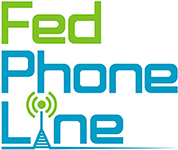NOTE: This is a personal blog, any views or opinions represented in this blog belong solely to the FedPhoneLine staff. WE ARE NOT Psychologists or Therapy Professionals, all data and information on these blogs is for informational purposes ONLY.
The Correctional system provides all the necessary documentation that an inmate will need if he or she wants to apply for a divorce from their partner.
Correctional Service Canada Provides the Following Information:
- Form 4D: Affidavit/Declaration. For an inmate to get this form they must submit a request to Sentence Management and state why they are interested in getting a divorce.
- The inmate can then request a Divorce Application Form from their librarian (or type it themselves).
- Once the form is filled out, the inmate must have their signature notarized by the Notary Public. Every Institution has a staff member in Sentence Management who can notarize and witness documents for inmates.
- Once the Notary Public has signed the document, the inmate must make an appointment with Legal Aid Counsel. The inmate should also take a 532 Payment Form with them when they visit Legal Aid (so that they can pay the fee associated with filing the Divorce Application).
- Legal Aid will file the application and in a few days/weeks the inmate will receive a Case Number from the court in the mail. The court will also send a notification to the inmate’s partner about the Divorce.
If the Divorce is not being contested, this matter can be resolved within six to eight months from the filing of the application.
The Queen’s Family Law Clinic (QFLC) is an excellent resource if you have any questions about Family Issues. The QFLC helps people who cannot afford a lawyer.
The QFLC is funded by Legal Aid Ontario (LAO) in partnership with Queen’s University Faculty of Law, with additional support from Pro Bono Students Canada (PBSC) and the class of Law ’81.
Student caseworkers work under the supervision of lawyers to provide services to low-income clientele, including some who, for several reasons, may not be otherwise eligible for LAO assistance with Family Court matters.
What does Queen’s Family Law Clinic do?
Applications and Motions to Change for:
- Custody
- Child Support
- Access
- Extraordinary Expenses
Assistance completing Court Forms, such as:
- Simple Divorce Applications
- Case Conference Briefs
- Form 35.1 Affidavits
- Financial Statements
- Affidavits for Uncontested Trial
- Settlement Conference Briefs
- Affidavits General
- Fee Waiver Requests
Contact information for Queens Family Law Clinic:
Address: 303 Bagot Street (LaSalle Mews), Suite 500, Kingston, ON, K7K 5W7
Phone: 613-533-2102
Email: QFLC@queensu.ca
www.queenslawclinics.ca
Sign Up for a Calling Service
Dealing with Family Court may require communication with the incarcerated individual. Perhaps the most convenient and best way to save the most money is with a local calling service like FedPhoneLine here’s how it works:
- Sign up for the service (with a Credit Card, Debit Visa, Debit Mastercard, or Prepaid Card from your Bank, Money Mart or the Post Office, NO VANILLA PREPAIDS)
- FedPhoneLine will provide you with a number that provides you with the lowest rate possible (another bonus is that it allows you to make collect calls to cell phones)
- Your loved one will call the FedPhoneLine number, which is connected to your phone
- You and your loved one can communicate for the cheapest price, there are no fluctuating fees, you know what each call costs
FedPhoneLine can easily cut your phone bill by over 50% and still allow you to talk to your loved one.

